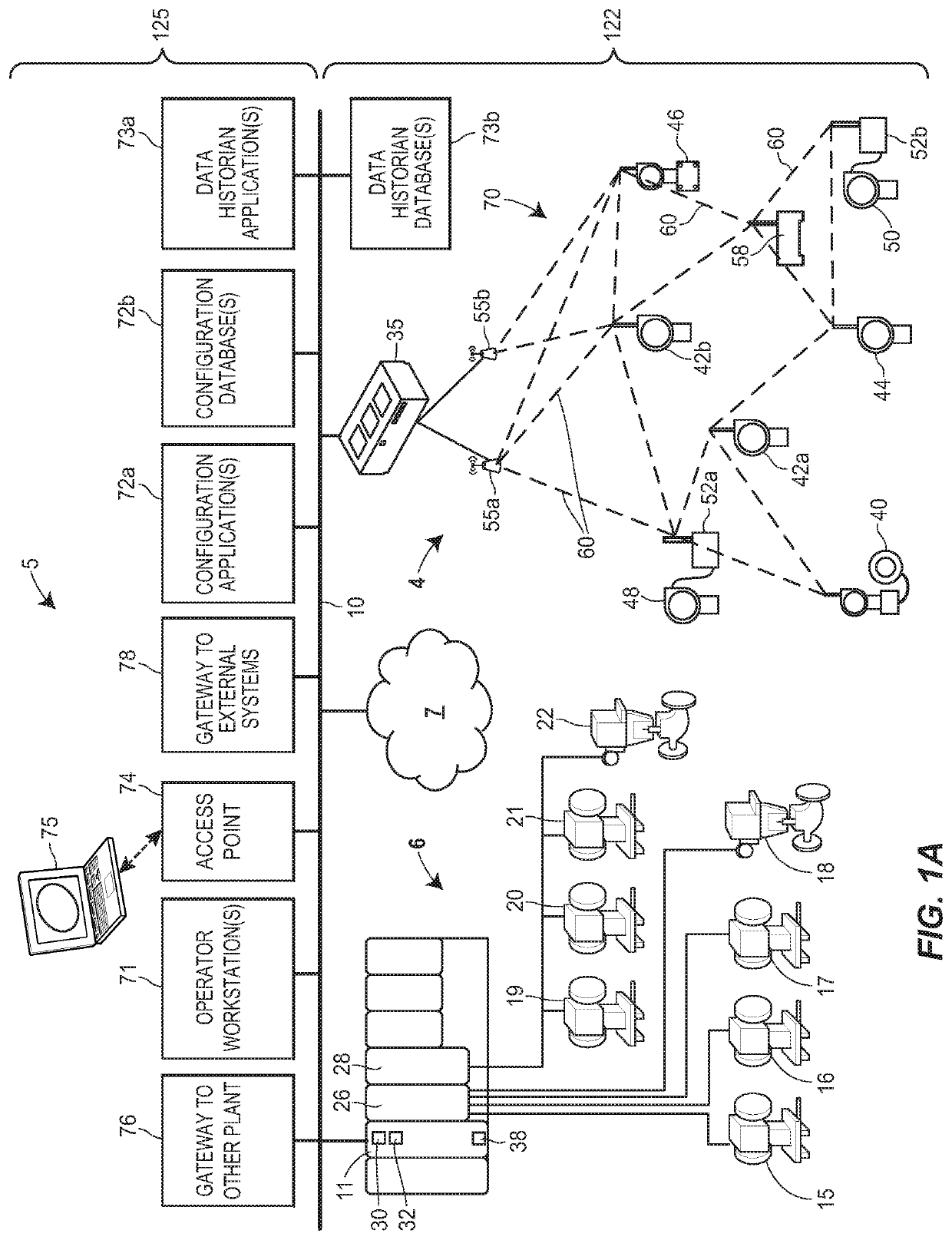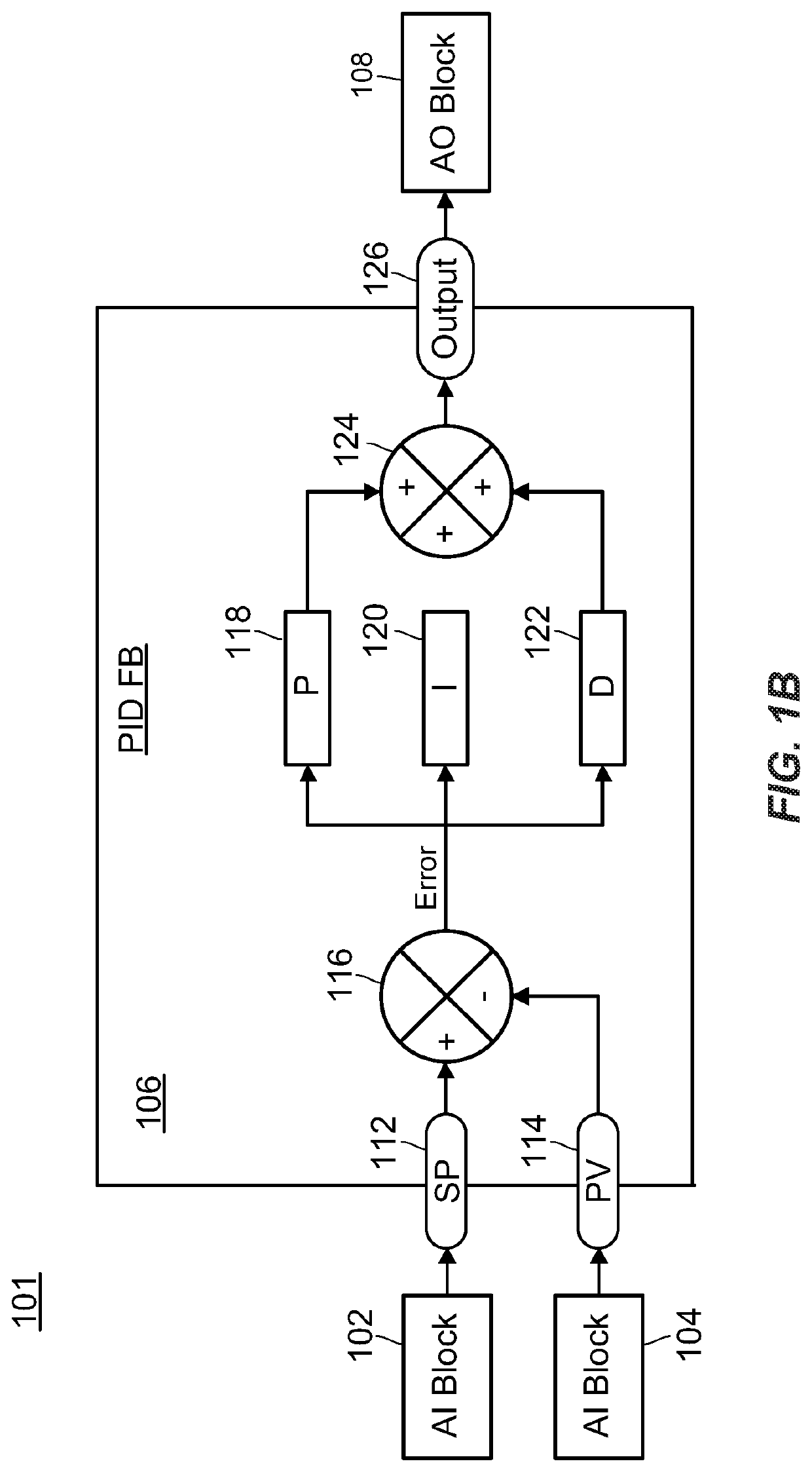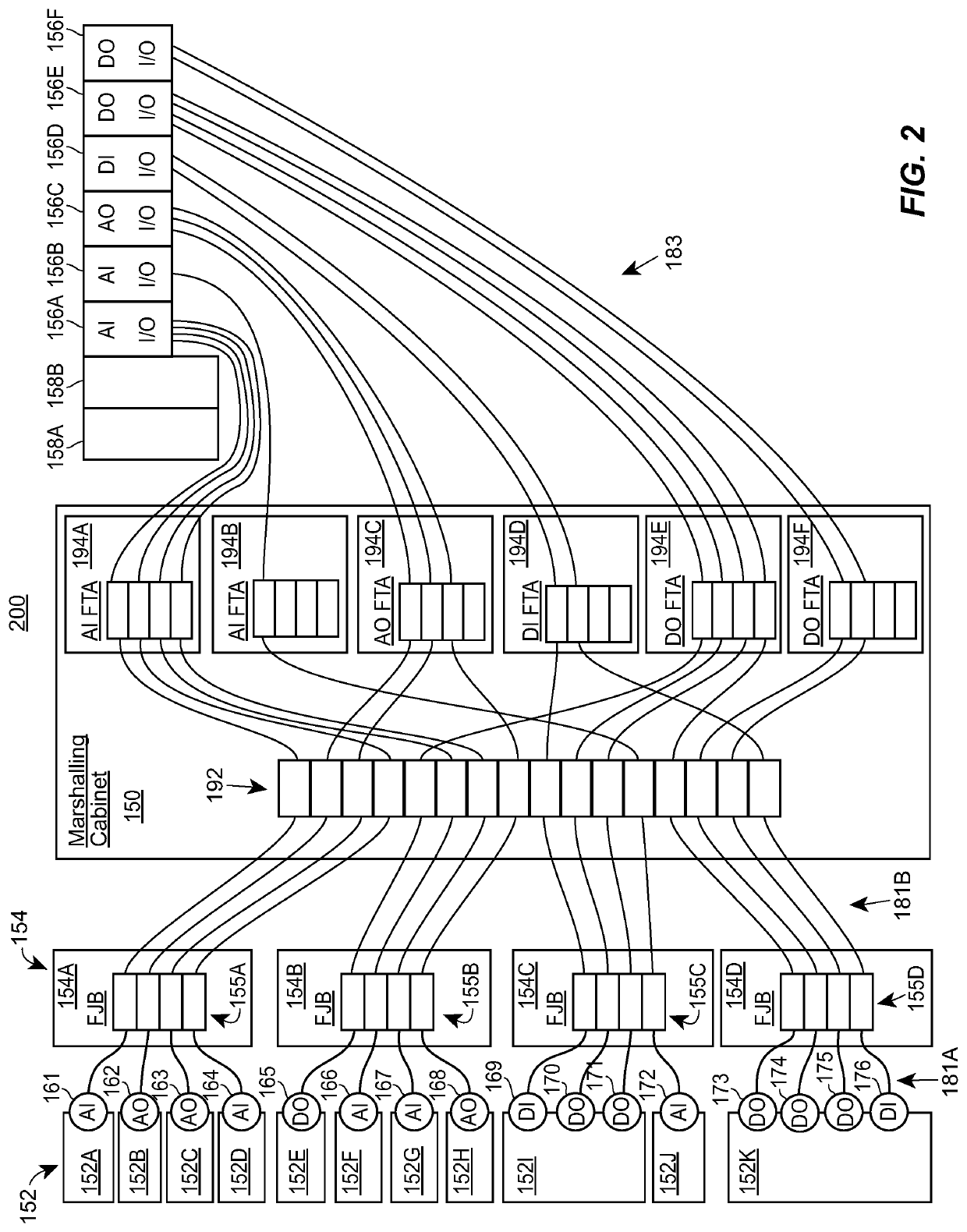Smart Functionality for Discrete Field Devices and Signals
a technology of discrete field devices and signals, applied in the direction of program control, total factory control, instruments, etc., can solve the problems of inefficient deployment of i/o cards and unused i/o channels, terminal blocks, inconvenient updating of field modules, and high cost of project changes. , to achieve the effect of quick and easy updating of field modules
- Summary
- Abstract
- Description
- Claims
- Application Information
AI Technical Summary
Benefits of technology
Problems solved by technology
Method used
Image
Examples
Embodiment Construction
[0048]As discussed above, a process plant, process control system, or process control environment that, when on-line, operates to control one or more industrial processes in real-time may be commissioned utilizing one or more of the novel smart commissioning techniques, systems, apparatuses, components, devices, and / or methods described herein. The process plant, when commissioned and operating on-line, includes one or more wired or wireless process control devices, components, or elements that perform physical functions in concert with a process control system to control one or more processes executing within the process plant. The process plant and / or process control system may include, for example, one or more wired communication networks and / one or more wireless communication networks. Additionally, the process plant or control system may include centralized databases, such as continuous, batch, asset management, historian, and other types of databases.
[0049]Below, the descripti...
PUM
 Login to View More
Login to View More Abstract
Description
Claims
Application Information
 Login to View More
Login to View More - R&D
- Intellectual Property
- Life Sciences
- Materials
- Tech Scout
- Unparalleled Data Quality
- Higher Quality Content
- 60% Fewer Hallucinations
Browse by: Latest US Patents, China's latest patents, Technical Efficacy Thesaurus, Application Domain, Technology Topic, Popular Technical Reports.
© 2025 PatSnap. All rights reserved.Legal|Privacy policy|Modern Slavery Act Transparency Statement|Sitemap|About US| Contact US: help@patsnap.com



